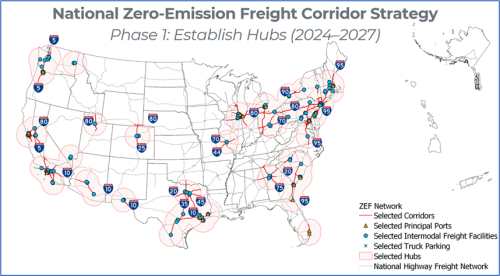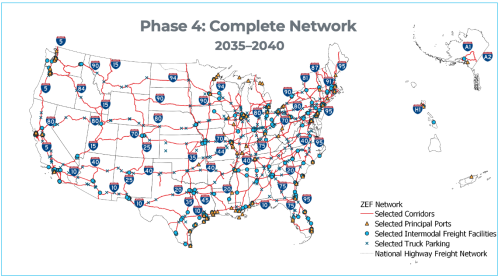The Strategy is designed to meet growing market demands by targeting public investment to amplify private sector momentum, focus utility and regulatory energy planning, align industry activity, and improve air quality in local communities heavily impacted by diesel emissions.
Providing ubiquitous and convenient access to electric vehicle (EV) charging and hydrogen refueling along freight corridors and at intermodal freight facilities and high-usage ports is key to achieving US goals to promote at least 30% ZE-MHDV sales by 2030 and 100 percent sales by 2040. The goal of the Strategy is to align public policy and investments by prioritizing, sequencing, and accelerating infrastructure along the National Highway Freight Network (NHFN) in four phases.
A core objective of the Strategy is to meet freight truck and technology markets where they are today, determine where they are likely to develop next, and set an ambitious pathway that mobilizes actions to achieve decarbonization.

In alignment with the Joint Office’s National Zero-Emission Freight Corridor Strategy, the Federal Highway Administration is announcing the designation of National EV Freight Corridors along the National Highway Freight Network and other key roadways.

The National Zero-Emission Freight Corridor Strategy will prioritize, sequence, and accelerate infrastructure along key freight corridors and hubs in four phases. The phases include:
Establish priority hubs based on freight volumes (2024-2027)
Connect hubs along critical freight corridors (2027-2030)
Expand corridor connections initiating network development (2030-2035)
Achieve national network by linking regional corridors for ubiquitous access (2035-2040)